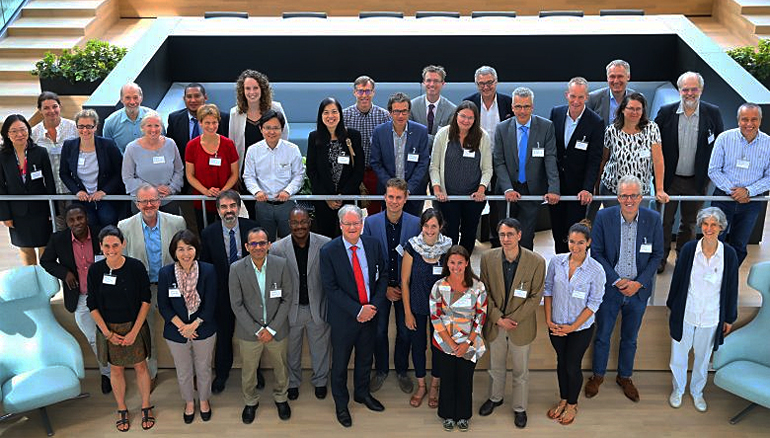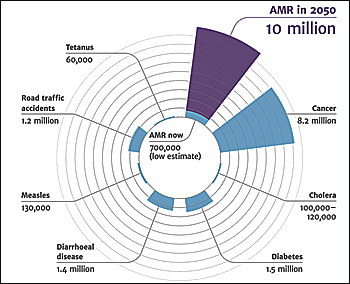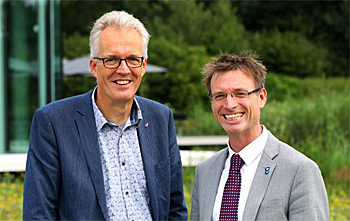KWR hosts WHO expert meeting on antimicrobial resistance in the Netherlands

On 5 and 6 July, 30 experts from all over the world met at research institute KWR, the Netherlands, to assist the World Health Organization (WHO) develop an action plan against the spread of antimicrobial resistance via water.
KWR and WHO had organised the expert meeting because antibiotic-resistant bacteria are the source of growing concern, and antimicrobial resistance is increasingly present in the environment.
 Annual number of deaths worldwide from different causes, including current and forecasted deaths due to antimicrobial resistance (AMR).
Annual number of deaths worldwide from different causes, including current and forecasted deaths due to antimicrobial resistance (AMR).
Death by infections
Worldwide, 700,000 people die every year from antibiotic-resistant bacterial infections and a British government commission report estimates that, if nothing is done, in 2050 10,000,000 people worldwide will die of such infections.
This would mean that death from infection would again constitute one of the main causes of death, as was the case before the discovery of antibiotics.
Aquatic environment
The watercycle plays a role in the spread of antimicrobial resistance: from the discharge of antibiotic-resistant microorganisms and antibiotic-resistance genes into the aquatic environment, to the transfer of resistance genes in the environment, and the exposure to resistance genes in the aquatic environment (drinking, recreation, irrigation of food crops, aquaculture).
The aquatic environment is therefore possibly becoming not only a reservoir but also a crucible for antimicrobial resistance to antibiotics.
More attention
WHO therefore wants more attention to be focused on antimicrobial resistance in water. More knowledge is needed about contamination sources, dissemination routes, presence and behaviour (transport, persistence, transfer), and the exposure and health risks of antimicrobial resistance in water.
More knowledge is also needed about the removal of antimicrobial resistance during treatment processes in the watercycle.
 Hosts of the expert meeting: chief science officer GertJan Medema (left) at KWR and WASH-coordinator Bruce Gordon at WHO.
Hosts of the expert meeting: chief science officer GertJan Medema (left) at KWR and WASH-coordinator Bruce Gordon at WHO.
Central position
The water sector worldwide does occupy an excellent central position from which to contribute to actions against this problem:
● the water sector is itself a beneficiary of a clean aquatic environment, and is one of the key advocates and stewards of this objective;
● the water sector has possibilities of taking action in the watercycle to help mitigate the spread of resistance genes and the associated health risks.
It is time therefore to develop a water action plan, within the context of the action plans against antibiotic resistance for other sectors, such as healthcare, livestock production and food.
KWR – WHO collaboration
KWR is a WHO Collaborating Center on water quality & health, and is also one of the test laboratories for the WHO International Scheme to Evaluate Household Water Treatment Technologies, through which WHO aims, via the certification of household water treatment systems, to reduce diarrhoea-related infant mortality in developing countries.
This news item was originally published on the website of KWR.
Read also on this website
● Singapore water week 2016: Watershare launched Community of practice on emerging substances, 12 July 2016
● Wetsus announces three new research topics: antibiotics, proteins, co2 gradient energy, 8 October 2014
● KWR starts second WHO test round on performance of household water filters, 12 August 2015
More information
KWR Watercycle Research Institute
WHO Collaborating Centre
Nieuwegein, the Netherlands
+31 30 60 69 653
www.kwrwater.nl
World Health Organisation
Antimicrobial Resistance Secretariat
Geneva, Switzerland
whoamrsecretariat@who.int
www.who.int/antimicrobial-resistance



